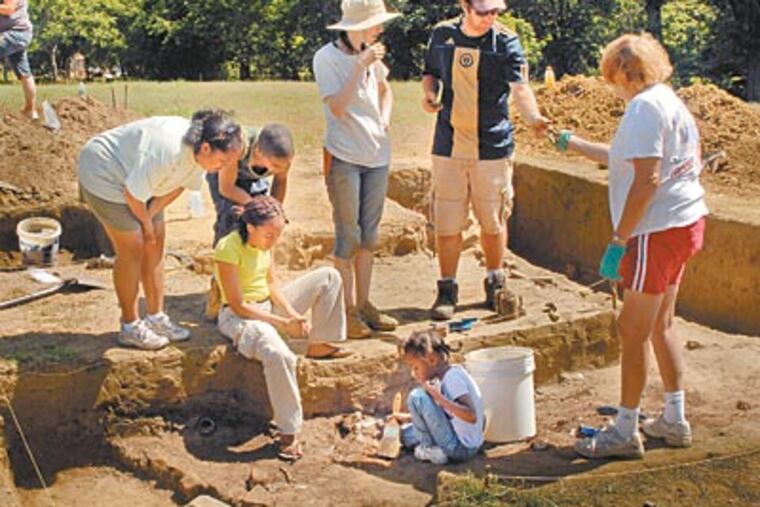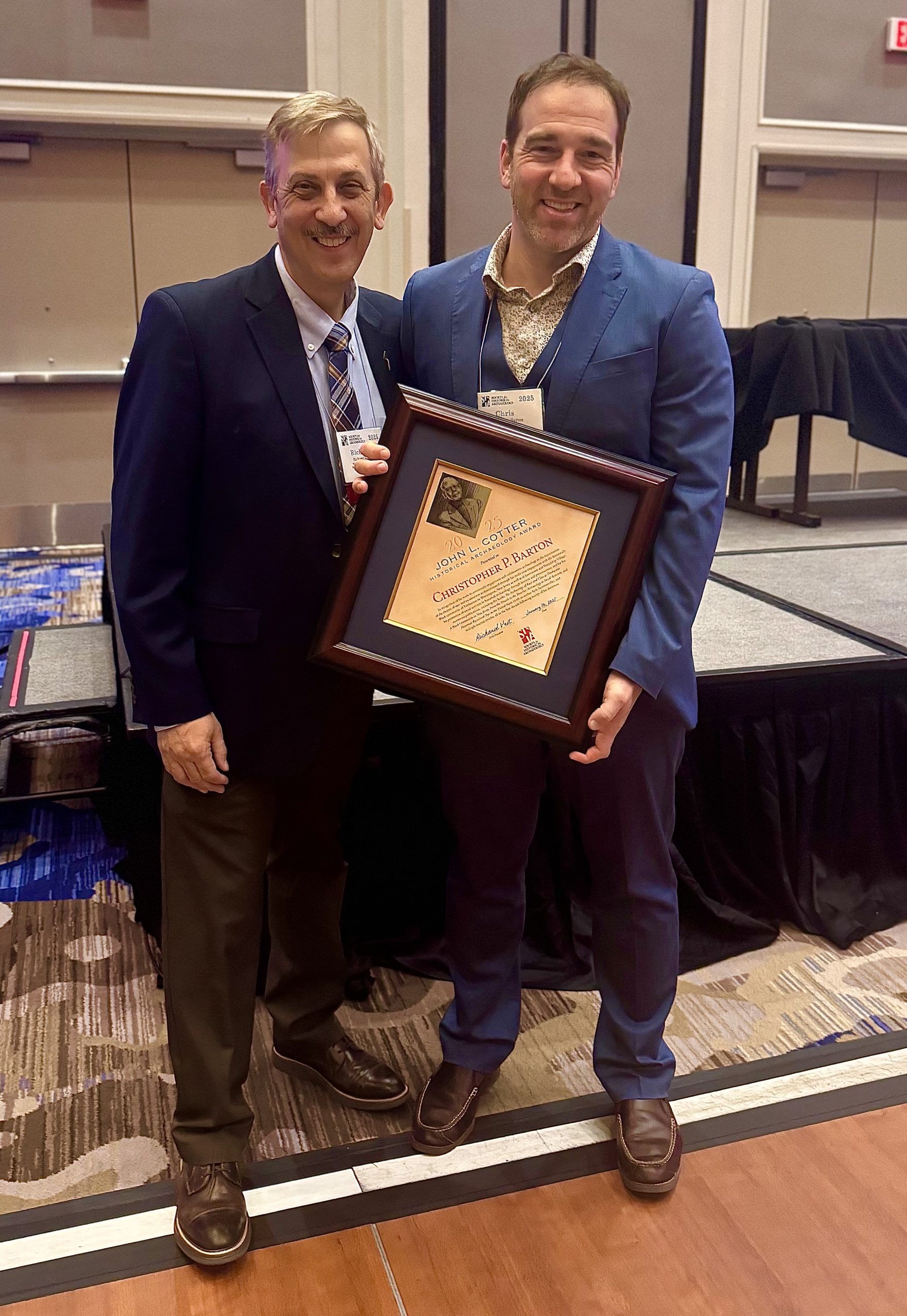Dr. Christopher Barton, West Chester Office Principal and Historical Archaeologist at Chronicle Heritage, recently received a U.S. Senate Commendation for Service to the Community and was honored by the Society for Historical Archaeology (SHA) as the recipient of the 2025 John L. Cotter Award for his historical archaeology work at Timbuctoo in New Jersey, a forgotten community founded in 1826 by formerly enslaved Black people.
“The SHA is pleased to announce the award of the 2025 John L. Cotter Award to Christopher Barton for his work on race, racialization, community engagement, and collaborative archaeology through his multi-year partnership with the Black community of Timbuctoo in Westhampton, New Jersey and the lectures and publications stemming from this work at the start of his career,” stated the SHA on its website and social media channels.

Timbuctoo was the focus of Barton’s dissertation while a doctoral candidate at Temple University. As part of his dissertation, in 2010, Barton led an excavation that focused on the remains of the William Davis home in Timbuctoo. Over 15,500 artifacts — including glass, ceramics, personal items, and food packaging — were collected during the dig.
Timbuctoo is also the subject of his most recent book, The Archaeology of Race and Class at Timbuctoo: A Black Community in New Jersey.
Barton has long collaborated with the Timbuctoo Historical Society and its founder, Guy Weston. “This is a community-based project where descendants are equal partners in the exploration of the past,” said Barton.
The Westons are seventh-generation landowners in Timbuctoo, which also operated as a terminus along the Underground Railroad. The only above-ground evidence of the historic community in south Jersey still standing today is the Timbuctoo Cemetery.
“In collaboration with descendants and community members, this project explores the intersectionality of life at Timbuctoo and the ways Black residents resisted the marginalizing structures of race and class,” said Barton. “Despite some support from local Quaker abolitionists, the people of Timbuctoo endured strained relationships with neighboring white communities, clashes with slave catchers, and hostilities from the Ku Klux Klan.”
Barton’s multiscale approach to uncovering the rich history of Timbuctoo has ranged from landscape archaeology and settlement patterns to analysis of consumer artifacts. He has weaved together inherited accounts, archaeological investigations, historical records, and comparisons to nearby, Black-established communities of the era, to paint a rich picture of life in Timbuctoo. Most importantly, Barton has recorded oral histories from community elders that he said, “offer insights into the racial tensions of the early to mid-20th century and convey the strong, lasting character of the community in the face of repression.”
Barton’s goal is to “illuminate the everyday impacts of slavery and race relations in a part of the country that seemed to promise freedom and highlights the use of archaeology as a medium for social activism.”

